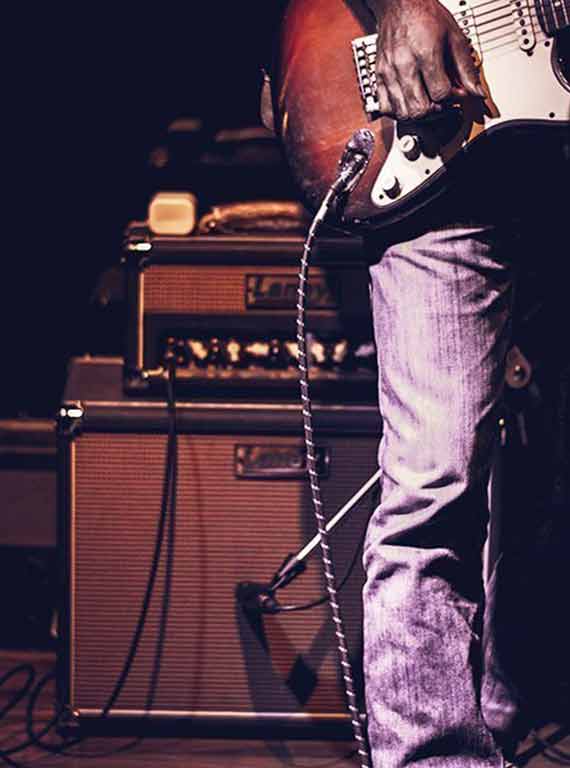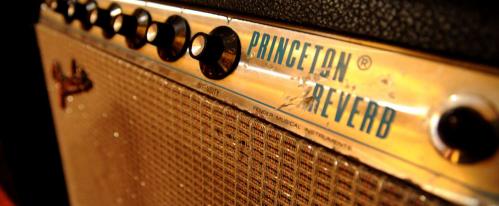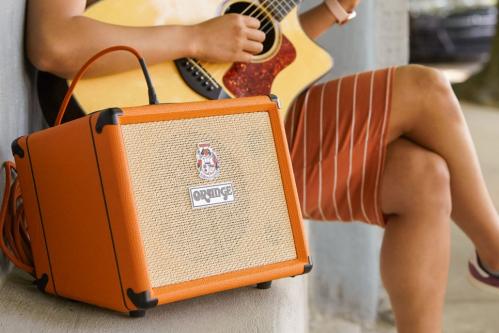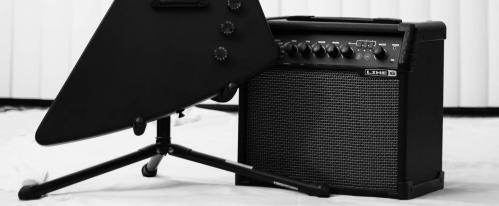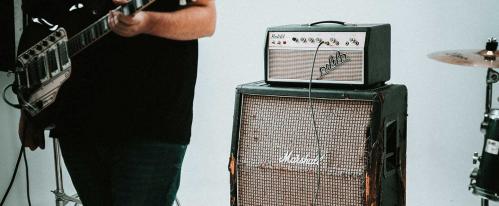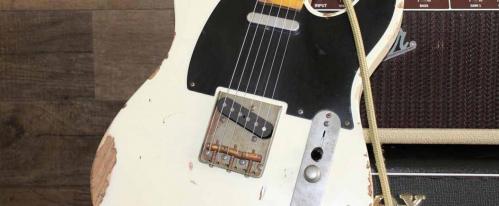Ever wondered “how does a valve amp work?”, well we offer up a quick explanation as to how a tube amp works and a little insight into why guitarists love the sound of a cranked tube amp more than anything!
Ever wondered "how does a valve amp work?" or why we love tube amps so much? We aim to answer the age old question.
Picture this…Jimi Hendrix playing the first few notes of ‘Voodoo Child (slight return)’ at Woodstock, Jimmy Page’s growling ‘Rock & Roll’ guitar riff at Madison Square Garden or Brian May’s ‘Hammer To Fall’ guitar solo at Wembley Stadium…are you in guitar heaven yet?
All these famous moments in guitar history had one constant – a cranked valve amp wailing at full power…and a legend wielding a guitar, of course. An electric guitar plugged into a cranked tube amplifier on a stage played to a crowd full of adoring fans is quite frankly a magical experience.
But, what is it about electric guitars, valve amplifiers specifically and loud speakers that move us and why do we love it so much? What is it that’s actually happening to makes us hear, feel and almost become one with this magical experience?
To understand this phenomenon, we aim to answer a common question; “How does a valve amp work”, and delve into why we love them so much. In addition, we're going to look at how pedals affect valve amps and why the BOSS GT-1000 is the ultimate option for tone purists and valve lovers.
How does a valve amp work?
First of all, we need to clarify the process in more detail and explain how the magic happens without getting too technical.
Step 1 - Electric Guitar
An electric guitar is a guitar that uses one or more pickups to convert the vibration of its strings into electrical signals. The vibration occurs when a guitarist strums, plucks, fingerpicks, or taps the strings. The pickups ‘pickup’ these vibrations and transfer them down the guitar cable to…
Step 2 - Guitar Amplifier
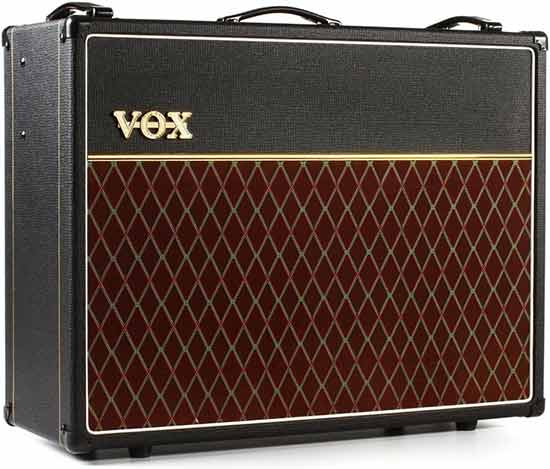
A guitar amplifier (or amp) is an electronic device or system that strengthens the weak electrical signal from a pickup on an electric guitar, bass guitar, or acoustic guitar so that it can produce sound through one or more loudspeakers, which are typically housed in a wooden cabinet.
Step 3 - Guitar Preamp
A preamp is a “pre amplifier” and, as the name suggests, it prepares the signal coming from a pickup or microphones for further amplification. It amplifies the audio signal to a level that can drive the power stage. The preamplifier also changes the tone of the signal; high preamp settings add overdrive and introduce harmonic overtones when pushed. This is the important part and the ‘feel’ and tones of your favourite valve amps get their sound and ‘mojo’ from this section. The likes of your Vox AC30 and your Fender Twin tube amps would not sound the same if it wasn’t for their pre-amp technology.
Step 4 - Guitar Power Amp
The power amplifier produces a high current signal to drive a loudspeaker and produce sound. This is what pushes the sound out through your speakers and where the volume and power comes from.
Step 5 - Guitar Loudspeaker
A guitar speaker is a loudspeaker – specifically the driver (transducer) part – designed for use in combination with a guitar amplifier so we can hear the sound specifically by the movement of air it pushes. The better quality of speaker, the better sound. The likes of The Kinks’ Ray Davies actually ripped his loudspeakers deliberately to get the iconic ‘You Really Got me’ sound - but there's pedals you can get for that (we won't recommend ripping your speakers!).
The Result!
In a tube guitar amplifier, there are interactions back and forth between all these elements of the amp including input stage, the pre-amp, power-amp and speaker. These elements essentially “talk” with one another in a “two way conversation” and depending on how different elements are set-up (parts used, quality of connections etc.) and how they change over time (how much you use them) effects the overall sound, as well as the sound the guitar player wants you to not only hear, but “feel”.
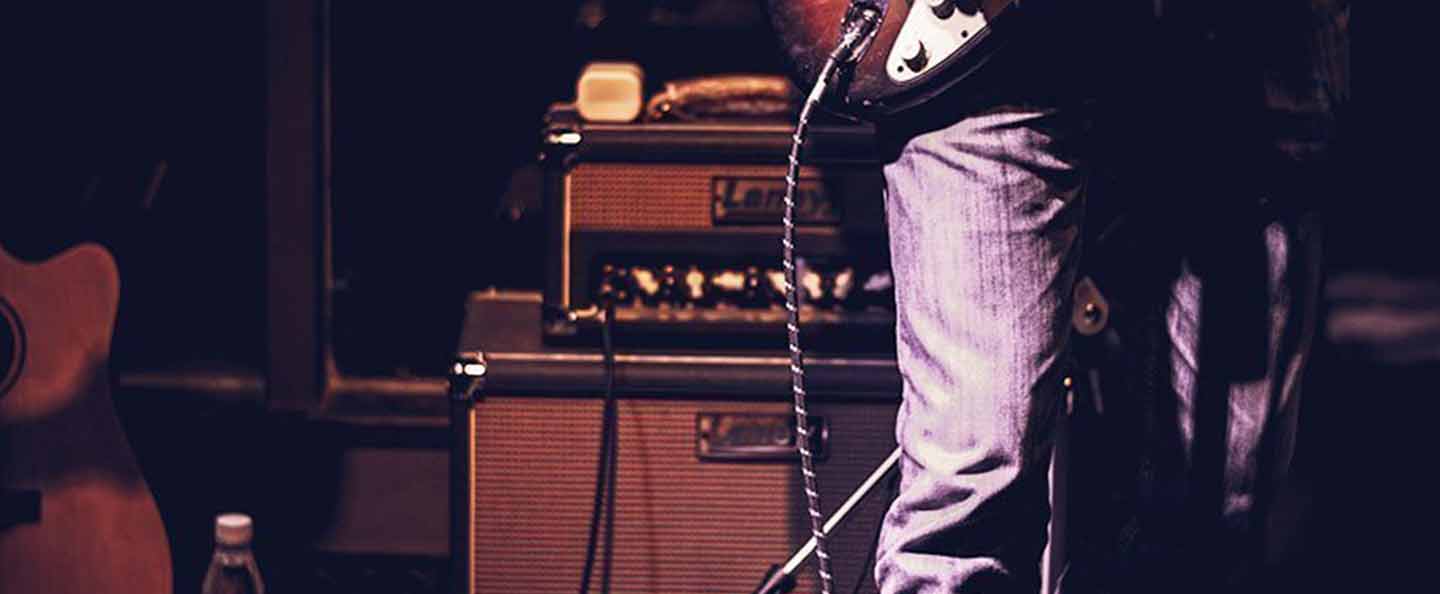
It’s the fact that all components, through each stage are constantly “interacting” with each other and “communicating” in a “two way” conversation right back to the guitar player who can feel this in real time. This conversation between the tubes, pre-amp, power amp and your guitar are all responsible for certain dynamics that only valve amps can really get right – many amps out there do a fantastic job of emulating a cranked valve amp and relaying the dynamics of a tube, and the likes of the Boss Katana for example does that extremely well, but plug-in, turn up and play a valve amp loud and there’s quite simply nothing like it.
These are just a few of the reasons why we love valve amps so much.
How do guitar pedals affect valve amps
As guitarists, our musical lives are a constant process of trial and error. We get hold of a pedal, plug it in to our amp and see if it sounds good. Repeat. As valve amps in particular have a feel and 'mojo' of their own, often our favourite guitar or bass pedal will sound great on one amp and absolute garbage on another – until we tweak it a bit of course.
The likes of overdrive pedals such as the Ibanez TS-9 Tubescreamer has been designed specifically to push your valves into, well, overdrive forcing more power through them to achieve a distorted sound and enhance the rich harmonics and clipping sounds produced by a valve. Analogue pedals such as a BOSS DS-1 or Electro Harmonix Holy Grail Nano or even an MXR Phase 90 work best with valve amplifiers as each pedal has its unique sound, but works in unison with a valve amp by retaining its own sound, just adding a flavour to the valve amplifier.
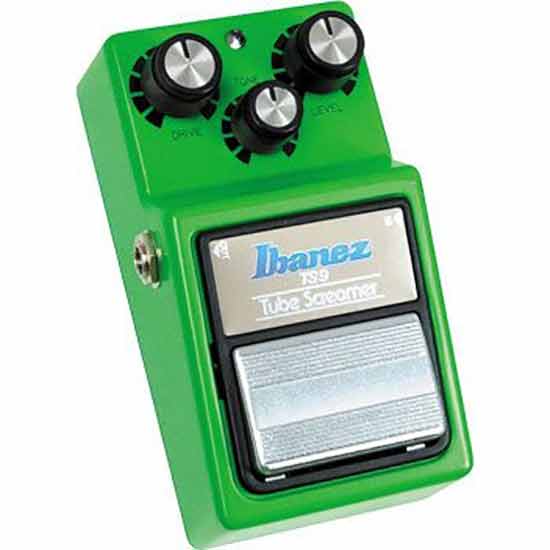
However, some digital pedals and multi effects units respond better with solid state amplifiers that can run a clean, flat tone. Multi effects pedals with amp emulations built-in work best on solid state amplifiers as you can use your amplifier for the ‘clean’ tone and as a foundation to build on, whilst you use the amp mods to get your preferred tone. Sometimes these amp modellers take a snap shot of the best way a particular amp would sound and force that upon your existing amplifier. But what if you want your multi-effects to respond as part of the chain – rather than dictate what’s going on?
But what if you want a multi effects unit and digital amp modeller to work correctly with your valve amp?
If you’re wondering if there is anything available that recreates the actual process of a valve amp in a digital guitar amp modeller, there’s one pedal you should be looking at. The Boss GT-1000.
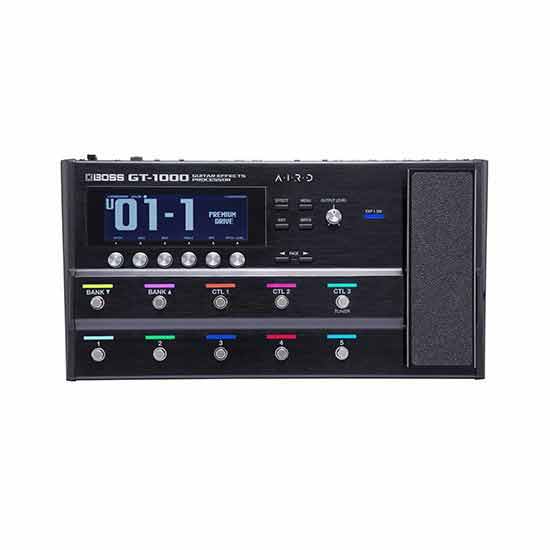
Until recently, digital amp modellers could not effectively recreate the “conversation” between each aspect of your valve amp and your guitar. Whilst digital amp solutions have improved tremendously in recent times and sound quality has improved to a level that even professional players and world famous guitarists have started utilising in studios and stages the world over, they are still fundamentally digital “snap-shots” of how an amplifier sounds and reacts, but do not have that all important two way communication, or “feel factor”.
This is where Augmented Impulse Response Dynamics or AIRD for short, comes in handy.
What Is A.I.R.D?
A.I.R.D or Augmented Impulse Response Dynamics is BOSS’ new ground-breaking technology that moves amp modelling, feel, tone and dynamic response to the next level.
What Is It Doing?
Simply put, it recreates the total interaction between all elements of a guitar amplifier, allowing you to enjoy a more “real” sound and feel, preserving all the dynamics of your amplifier and your effects.
Unlike other Multi FX units in the market, GT-1000 uses AIRD to create sounds in a unique way. Rather than modelling an amp set-up in a “linear fashion” i.e. just taking the sound, AIRD models the total interaction found inside amplifiers, effectively re-creating the ideal push and pull dynamics of all the amp sounds from some of the most famous amps in history. This means everything reacts the way it's supposed to.
What Is Aird Output?
AIRD Output is another part of the AIRD processing that allows “Total System Integration”. Simply put, you never have to compromise the amp selection on the GT-1000 when going into a “real” amp – just tell the GT-1000 what you are going into and it adjust the output and sounds accordingly. This way you preserve the tone of your own amp and the GT-1000 interacts with your amplifier rather than completely overriding any existing flair or flavour you want from your existing valve amp. It works WITH your amp, not on its own.
What’s The Advantage?
With all other digital effects and multi effects units of a similar style and design, whenever you want to plug into your favourite amp (instead of an FRFR system or a PA) you often have to turn off the amp settings within that unit, because you are then running pre-amp, power amp and speaker modelling into an amp’s pre-amp, power amp and speaker which creates a fairly horrible result. This is like trying to run an already existing amplifier sound and all its dynamics into another amplifier. It’s like having two different flavour pizzas on top of each other and expecting to only taste one – you just get a muddy flavour.
'It’s like having two different flavour pizzas on top of each other and expecting to only taste one – you just get a muddy flavour.'
AIRD OUTPUT Options via output select allow you to tell the GT-1000 what kind of amp you are plugged into and it will alter its output to match what you are plugged into. Now running your British style stack into your tube combo will sound totally normal, allowing your smaller speaker combo to have the full rich sound, dynamic, response and feel of a much bigger amp behind you.
The team at BOSS plan to issue further types of AIRD OUTPUTS and will allow external IR loading, meaning your favourite Cab responses will be able to be used into a PA, FRFR system etc. This opens up a world of possibilities for the valve purists out there.
If you want to learn more about the BOSS GT-1000, we recommend checking out our video below.

